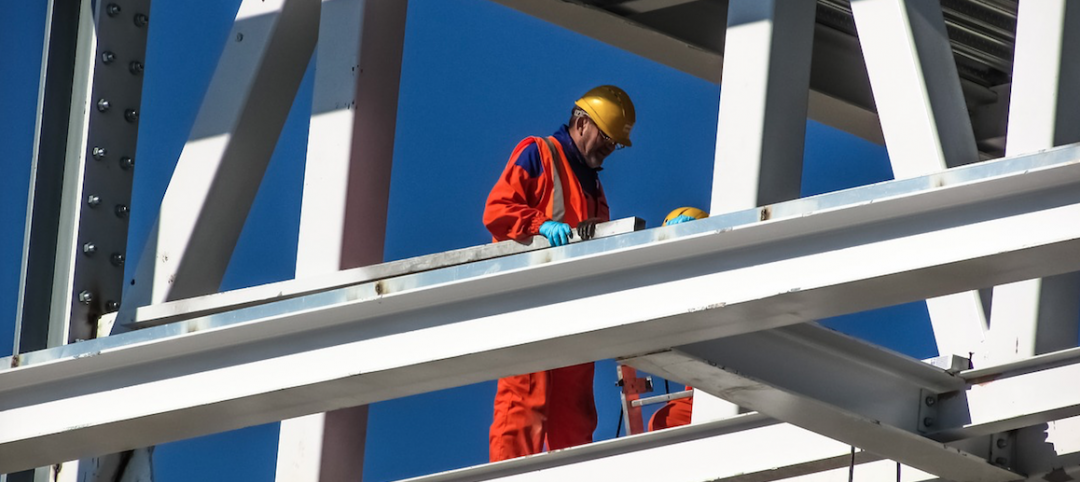A new survey by the American Institute of Architects (AIA) finds that a large majority of Americans (83%) consider public buildings—schools, libraries, community centers, and parks—part of their community’s infrastructure. And, 94% of those surveyed say that having well maintained public buildings are important to the future of their community.
In a key finding for policy makers, 83% of survey respondents agreed that investment in these public buildings is just as important as investment in roads and bridges. The survey also found that seven in 10 Americans want their public buildings renovated, and almost three-quarters of Americans consider public schools in good condition a “must have” in the communities in which they live.
These are some of the major findings of the first-ever AIA survey of American attitudes toward essential community buildings. The survey results, conducted by The Harris Poll, were made public today at the AIA Build America Summit.
Major survey findings:
- More than three in four Americans (78%) think their local government should take some financial responsibility for supporting the investment in their public buildings. Just under two-thirds (61%) think state government should take some financial responsibility. A majority (53%) think that community members should support it, and almost half (46%) believe private entities should also invest.
- A majority of Americans believe that the condition of community buildings can lead to notable benefits, particularly higher property values (60%) and improved quality of education (62%).
- 69% of Americans believe schools are one of the most important buildings to receive a consistent level of public funding.
- On average, Americans feel about one third (34%) of public funds budgeted for community features should be allocated to public buildings and/or spaces. Of the remaining, they would allocate 37% to transportation and 29% to public housing.
- Significant gender differences exist in attitudes toward public buildings and spaces. For example, women are more inclined than men (44% to 34%) to consider public housing options a “must have.” Conversely, older men (44%) place the most emphasis on funding transportation.
- Almost half those surveyed (48%) believe public housing (defined as a combination of senior and affordable housing) is one of the most important community features to receive a consistent level of public funding.
“It is clear from the survey that Americans consider investment in community buildings and spaces a priority,” said AIA CEO Robert Ivy, FAIA. “Not only do they believe that that investment would lead to improvements in property value, education, and public safety, but also serve to attract new businesses and enhance their overall quality of life.”
A copy of the survey results can be found here.
Related Stories
Market Data | Aug 29, 2017
Hidden opportunities emerge from construction industry challenges
JLL’s latest construction report shows stability ahead with tech and innovation leading the way.
Market Data | Aug 28, 2017
U.S. hotel construction pipeline is up 7% year-over-year
For the economy, the rate of growth may be low but it’s running on all cylinders.
Market Data | Aug 23, 2017
Architecture Billings Index growth moderates
“The July figures show the continuation of healthy trends in the construction sector of our economy,” said AIA Chief Economist, Kermit Baker.
Architects | Aug 21, 2017
AIA: Architectural salaries exceed gains in the broader economy
AIA’s latest compensation report finds average compensation for staff positions up 2.8% from early 2015.
Market Data | Aug 20, 2017
Some suburban office markets are holding their own against corporate exodus to cities
An analysis of mortgage-backed loans suggests that demand remains relatively steady.
Market Data | Aug 17, 2017
Marcum Commercial Construction Index reports second quarter spending increase in commercial and office construction
Spending in all 12 of the remaining nonresidential construction subsectors retreated on both an annualized and monthly basis.
Industry Research | Aug 11, 2017
NCARB releases latest data on architectural education, licensure, and diversity
On average, becoming an architect takes 12.5 years—from the time a student enrolls in school to the moment they receive a license.
Market Data | Aug 4, 2017
U.S. grand total construction starts growth projection revised slightly downward
ConstructConnect’s quarterly report shows courthouses and sports stadiums to end 2017 with a flourish.
Market Data | Aug 2, 2017
Nonresidential Construction Spending falls in June, driven by public sector
June’s weak construction spending report can be largely attributed to the public sector.
Market Data | Jul 31, 2017
U.S. economic growth accelerates in second quarter; Nonresidential fixed investment maintains momentum
Nonresidential fixed investment, a category of GDP embodying nonresidential construction activity, expanded at a 5.2% seasonally adjusted annual rate.















